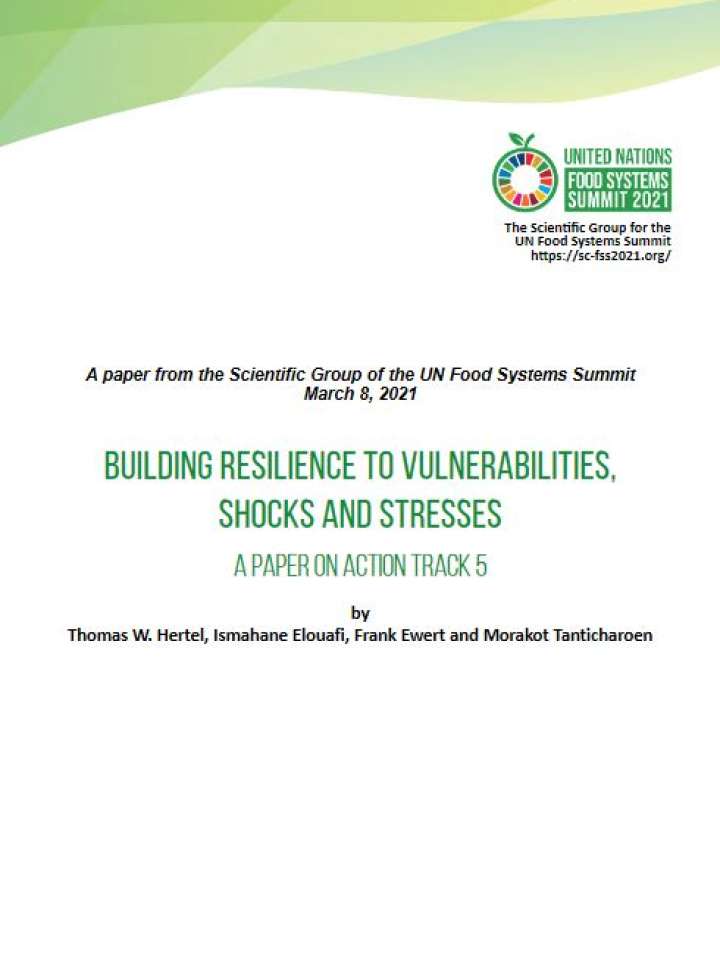Building resilience to vulnerabilities, shocks and stresses - a paper on Action Track 5
In this paper, a range of local, regional, national and global solutions covering different parts and contexts of the food system have been reviewed to understand progress and challenges in building resilience to improve food security. The resilience framework is helpful to conceptualise complex problems related to food security and allows us to point to important challenges that need to be overcome. From this analysis we conclude that developing an operational resilience approach is always context-specific and requires the involvement of relevant local, national and international actors, organisations and agencies. Hence, there is no single game changing solution that will ensure resilience across multiple food security challenges. Instead, adopting resilience as a systems approach to support the conceptualisation and operationalization considering the respective actors will contribute to the development of context-specific solutions. Beyond that, much will be gained by highlighting successful solutions and facilitating exchange of tools, data, information and knowledge and capacity. This will also contribute to the further develop of the resilience approach as a key concept to achieve food security.
Action Track 5 of the Food Systems Summit aims to ensure food system resilience in the face of increasing stresses from climate change, population growth and conflict over limited natural resources. We identify five distinct capacities that are key to a resilient food system in the face of these shocks: (i) to anticipate, (ii) to prevent, (iii) to absorb, (iv) to adapt to an evolving risk and (v) to transform in cases where the current food system is no longer sustainable. Resilience at the individual, community, government and global food system level must be built in such a way that the economic, social and environmental bases to generate food security and nutrition for current and future generations are not compromised anywhere in the world. This means that it is equitable in a financial sense (economic resilience), it is supportive of the entire community (social resilience), and it minimizes harmful impacts on the natural environment (ecological resilience).
Explore further
